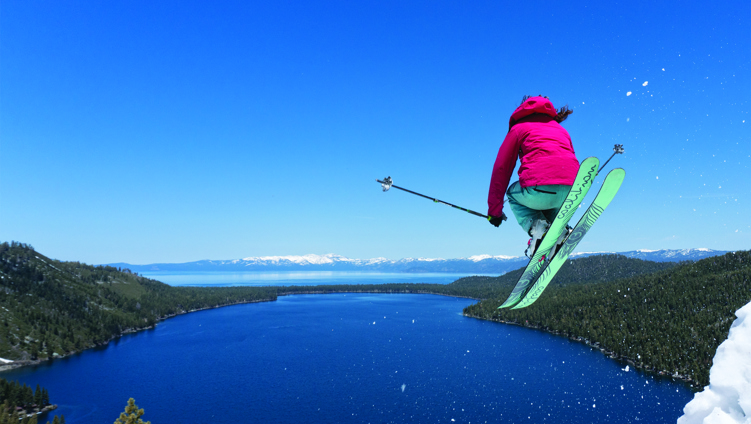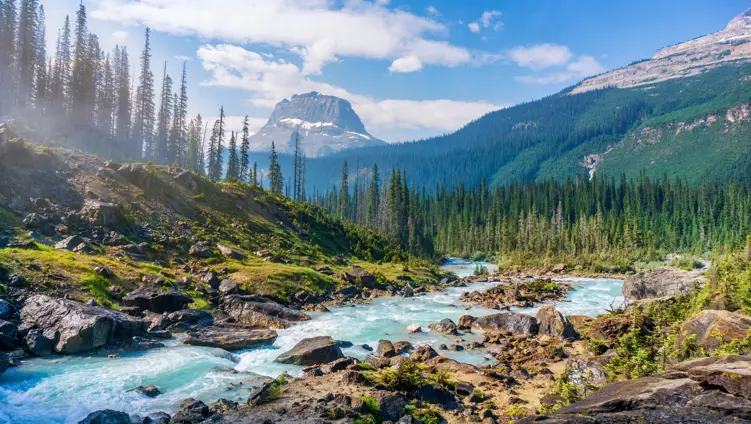Kurtis Baute is a scientist turned environmental activist living in British Columbia. His activism uses playful experiments, adventurous direct action and accessible reasoning. Our Editor Sam went on a walk with him.

Kurtis Baute is a scientist turned environmental activist living in British Columbia. His activism uses playful experiments, adventurous direct action and accessible reasoning. Our Editor Sam went on a walk with him.
Kurtis Baute is trained in biology and environmental science. Until recently his mission was to “get people excited about science” through “whimsical science projects'' on his Youtube channel. He has proved the earth is round with two sticks and a bike, spent a week upside-down and gone 24 hours without touching plastic.
One such experiment, in 2018, involved sealing himself in an airtight biodome containing 200 plants. The aim was for photosynthesis to counteract his carbon dioxide production and produce enough oxygen for him to live in the dome for three days. But things didn’t quite go to plan, as Kurtis' first video on the experiment shows.
On one level an overcast day meant the plants didn’t photosynthesise sufficiently, meaning Kurtis had to leave the dome after fifteen hours. But on a deeper level the biodome experiment “changed my life, threw me into an existential crisis,” remembers Kurtis. “For the first time I internalised what climate change meant for me as a person” - and, by extension, for us as people.
Newly convinced that his science videos were not enough, Kurtis has since been on an activism learning journey, seeking how best to apply his knowledge and penchant for quirky microadventures to fight climate change. Though already knowledgeable about the issue of climate change, his first step was to make sense of the mishmash of environmental groups in Vancouver, from the Canadian Green Party through large NGOs like Greenpeace, Extinction Rebellion and smaller community groups.
After much reading and curiosity, the completion of Extinction Rebellion’s non-violent direct action training and an ear to the ground in search of possible actions, Kurtis found himself living in a tree canopy - first on a portaledge for a week, and then while building a treehouse in a cottonwood tree.
This was in the summer and autumn of 2020 in Burnaby, just East of Vancouver. The aim was to oppose and delay the Trans Mountain Pipeline Expansion. If completed, this expansion - which has attracted fierce debate and protest for years - would see a new oil pipeline run parallel to an existing pipeline for roughly 600 miles from Edmonton to Burnaby. The expansion would almost treble the original pipeline’s capacity from 300,000 to 890,000 barrels of diluted bitumen per day.
Pipeline supporters point to jobs and financial benefits. Opponents say these benefits are exaggerated, and point to a lack of meaningful consultation with First Nations communities and a range of environmental problems including emissions, spillages and tanker-traffic effects on orca populations and emissions. Public opinion is divided, but becoming more opposed. In 2020, when projected costs rose from £7.4 billion to $12.6 billion, national support fell to 48%, with 45% opposed. In British Columbia more people opposed than supported for the first time.
Emissions is the headline factor for Kurtis. Expansion would see the pipeline producing more emissions than all of Austria. Despite valid and difficult concerns around jobs, this simply isn’t sustainable. “Imagine we’re back in March and somebody says, ‘I know there’s a pandemic, but I want to get more jobs in aeroplanes,’” Kurtis says. This obviously wouldn’t be viable. “We know we're going to have to fly less to save lives, and people working in travel are going to be out of work soon,” Kurtis continues. “There is, however, lots of work to be done in health care, for example. With the oil industry it's the same sort of stakes: it’s an industry that can’t last, and we need to create so many green jobs.” The green economy is one of the greatest economic opportunities ever, argues Kurtis. A just transition supporting people into new jobs will not be easy, but is the only sustainable route.
Kurtis is one of many environmentalists and Indigenous communities protesting the pipeline across Canada and beyond. And these actions are having an effect. Kurtis believes “the balance is now looking in favour against the pipeline.” With oil prices dropping, public opinion turning and environmental awareness growing across society, delays are critical. The Parkland Institute has conducted financial analysis finding the expansion not to be viable, and the Canadian Energy Regulator recently reported that the expansion is not needed unless Canada doesn’t plan to further its action on climate change. Even though the treehouse was removed before anybody could fully occupy it, it has still delayed trees being felled to make way for the pipeline.
It is impossible to ignore the adventurous connotations of a treehouse - a “bold and beautiful” action in Kurtis’ mind. Indeed, this sense of play and adventure is not merely incidental. It infuses Kurtis’ campaigning. “I think it’s really important that we have multiple types of voices and multiple types of conversations about climate,” he says. “Really the narrative that has so far dominated the climate movement is all doom and gloom. That works for some people, and gets some people excited to start. But for some people - I think a lot of people - that makes them shut down … If we can have at least some of these playful actions that are inspiring and hopeful it can get some people on board who wouldn’t otherwise be interested in knowing more.” Playful actions like building a toilet in a treehouse, for example (video by Ben Cox) ...
Direct action is one way individuals can contribute to systemic change. But not everybody can live on a portaledge for a week - a fact Kurtis is quick and consistent to acknowledge. The important thing, he argues, is for people to act in ways their privileges, or lack of them, allow. People with many layers of privilege (Kurtis puts himself in this bracket) have more options and should shoulder more responsibility.
Cutting individual carbon footprints is a useful minimum, Kurtis says. But his view of this changed when he learned that BP was crucial in popularising the idea as a way to individualise the responsibility of emissions and climate change. People are more less susceptible to this gaslighting today - as evidenced by the viral evisceration of a Shell tweet in November last year - but the fact remains that collective action is more powerful.
Partly this means supporting the right political parties. Kurtis supports the Green Party of Canada, which has the most compelling environmental platform, although he recognises that voting in such a way isn’t always straightforward, especially in countries like Canada and the UK without proportional representation (Justin Trudeau broke his 2015 promise of electoral reform).
For most of us though, the collective effort that most resonates with us will likely be a campaign group in our local area - Kurtis recommends - a charity campaign, our workplace or a local social group. The key question we can all ask ourselves is where we can apply pressure and support people beyond our individual behaviours. Kurtis will continue doing this as he makes videos, supports actions and pursues madcap environmental projects. We’ll be keeping a supportive eye.
Photos courtesy of Ben Cox (http://bencoxfilm.com/)







This interview is tied to our resolution to cover the intersection between adventure and systemic responses to social change. If you know about a story we should cover in the vein, we’d love to hear about it, either as a tip or a pitch.

